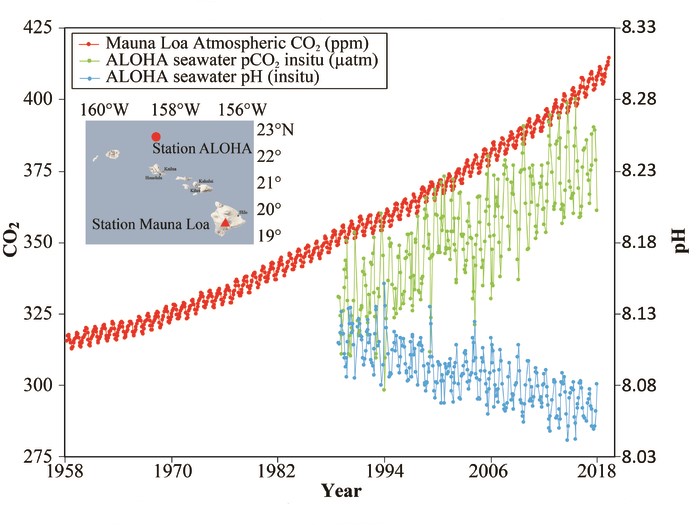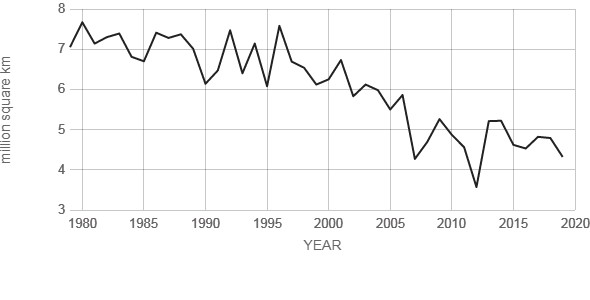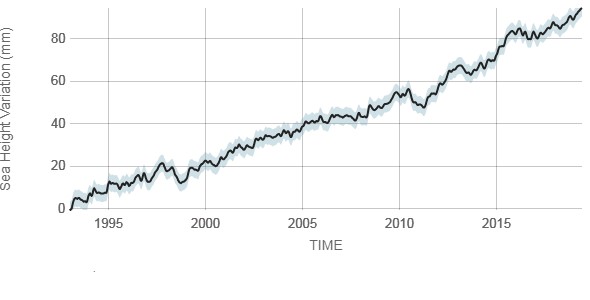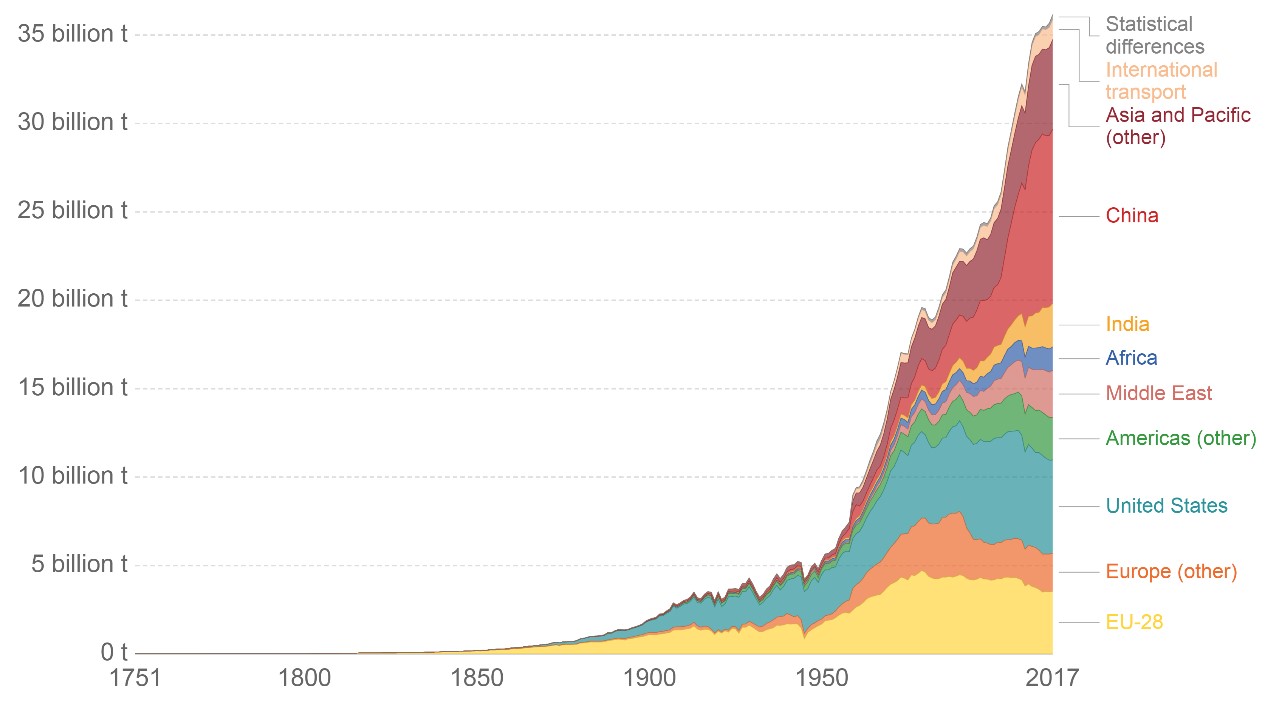Indexing & Abstracting
Full Text
Review ArticleDOI Number : 10.36811/gjcee.2019.110005Article Views : 70Article Downloads : 18
Are we Already in a Climate Crisis?
Kuok Ho Daniel Tang
Department of Environmental Engineering, Curtin University Malaysia, Miri, Sarawak, Malaysia
*Corresponding Author: Kuok Ho Daniel Tand, Bioprocess & Technology Research Cluster, Department of Environmental Engineering, Curtin University Malaysia, CDT250, 98009 Miri, Sarawak, Malaysia, Email: daniel.tang@curtin.edu.my
Article Information
Aritcle Type: Review Article
Citation: Kuok Ho Daniel Tang. 2019. Are we Already in a Climate Crisis?. Glob J Civil Environ Eng. 1: 25-32.
Copyright: This is an open-access article distributed under the terms of the Creative Commons Attribution License, which permits unrestricted use, distribution, and reproduction in any medium, provided the original author and source are credited. Copyright © 2019; Kuok Ho Daniel Tang
Publication history:
Received date: 14 October, 2019Accepted date: 24 October, 2019
Published date: 26 October, 2019
Abstract
Global warming, melting of the permafrost, glaciers and sea ice, rising sea level as well as ocean warming and acidification have resulted in degradation of ecosystems and increased occurrences of extreme weather events which threaten the social and economic systems. The media and scholarly articles have interpreted these dire consequences of climate change as a climate crisis intimidating the survival of human and other inhabitants on Earth. This mini review aims to examine the concept of climate crisis and establish whether the current state of climate change fits the definition of climate crisis. There is generally a lack of consensus on what a climate crisis is and a plausible notion presents it as a state of climate change beyond the tipping points. This brings tipping points into determining whether we are in a climate crisis and this review finds that the only tipping point surpassed with high probability is that for melting permafrost, glaciers and sea ice. It is particularly challenging to locate the tipping points in a complex Earth system with high geographical, ecological and environmental variability. This review concludes that we are yet to be in a climate crisis but synergistic impacts of environmental degradation could usher in a climate crisis faster than we think.
Keywords: Climate change; Crisis; Blobal warming; Melting; Ocean; Rainforest
Introduction
The Intergovernmental Panel on Climate Change defines climate change as long-term variations in the climatic means and properties that manifest over decades or longer. From the natural variability of climate over geological time, we are now coming to terms with the anthropogenic nature of climate change [1]. For the past decades, human activities have resulted in the upsurge of greenhouse gases (GHGs) in the atmosphere, causing climate anomalies. Carbon dioxide in the atmosphere is at its unprecedented level, leading to corresponding warming of the Earth [2]. The monthly mean atmospheric carbon dioxide level increased from approximately 315ppm in 1958 to slightly above 380ppm in 2008 (see Figure 1). As of August 2019, the mean monthly carbon dioxide level was recorded at 409.95ppm [3].

Figure 1: Atmospheric Carbon Dioxide Concentration Recorded at Mauna Loa [3].
While some might have argued that climate change is a natural cycle, it is certain now that GHGs-induced global warming is not a natural phenomenon [2,4]. The average global temperature over land and sea surface in 2017 was 0.84oC higher than the average of 13.9oC over the 20th century [1,5]. This was only marginally lower than the 0.94oC reported in the previous year attributed to the influence of El Ni?o [5]. Since 2010, six warmest years had been recorded and the years from 2014 to 2016 marked consecutive record-breaking global temperatures. On average, the average global land and ocean temperature recorded a rise of 0.85oC from 1880 to 2012 [5]. The temperature climb has resulted in melting of glaciers and Arctic sea ice, which causes increasing sea level. Climate change is also manifested through increasing occurrences of extreme weather events [2]. In September 2019, India was hit by record high rainfall during its Monsoon season which would have weakened usually in early September [6]. Named storms and hurricanes are also occurring at higher frequency over the past two decades [2]. The shrinking of Antarctic sea ice since 2016 has begun to raise concern though it is still too early to conclude that the variation is significant and is linked to global climate change [7].
Increasing concentration of atmospheric carbon dioxide leads to higher dissolution of carbon dioxide in the ocean, thus, lowering the ocean pH (Figure 2) [8]. This decline of ocean pH is called ocean acidification and is associated with dire consequences such as inhibiting formation of shells and skeletons by marine calcifying organisms and corroding existing shells [9]. Ocean acidification poses threat to the survival of calcifying organisms and the marine primary production system, which could have far-reaching socio-economic implications [10].

Figure 2: Atmospheric CO2 level and Seawater pH in the North Pacific [8].
Rising ocean temperature is more detrimental to coral reefs than ocean acidification, causing coral bleaching and subsequently compromising their functions to protect shorelines against storm surges and cyclones [10,11]. Warming ocean decreases solubility of oxygen in seawater, resulting in deoxygenation which could ultimately harm fisheries, hence the income and food supply to human [11]. Warming ocean also intensifies extreme weather events caused by cyclones and El Ni?o and negatively impacts the social and economic systems [11]. With increasing manifestation of the adverse impacts of climate change across the globe bringing humongous socio-economic and health concerns, scientists and the media warn of the arrival of a climate crisis from aggravation of climate change [10,12].
It is not uncommon to spot scholarly and news articles bearing ‘climate crisis’ in the titles. However, there is very little attempt made to define what a climate crisis really is and whether climate change has already exacerbated into climate crisis. It is crucial to know the current state of climate change to permit corresponding mitigating and adapting responses. This mini review therefore aims to examine the concept of climate crisis and establish whether the current state of climate change fits the definition of climate crisis. It does not, however, provide specific recommendations for mitigation and adaptation corresponding to the current and future trends of climate change.
Climate Crisis
The phrase “climate crisis” was popularized by a report from the American University International Law Review which equated it to climate change and global warming [13]. Recently, it has made several appearances, for instance, via the establishment of the ‘House Select Committee on the Climate Crisis’ in the United States, and the campaign named “Call It a Climate Crisis” [12]. Climate crisis also appears in the title of books such as ‘Soil Not Oil: Environmental Justice in a Time of Climate Crisis’ by Shiva [14] and ‘The Climate Crisis: An Introductory Guide to Climate Change’ by Archer and Rahmstort [10]. However, it is often linked to the various facets of climate change and has not been given its own definition.
Crist provided a glimpse of the gradation of climate change from manageable to calamitous, passing through tipping points somewhere in the middle [15]. The author seems to suggest that tipping points are the lines that stand in between a climate crisis and controllable climate change, beyond which the changes are not reversible [15]. The challenge lies in identifying where the tipping points are. From the perspective of the media, climate change is a crisis when it harms human survival and when it is such painted to garner a sense of urgency which prompts behavioural changes [16]. Based on the concept of risk society, the adaptive capacity of political and communicative systems also constitutes a climate crisis [17]. While it can be deduced that a crisis relates to escalation of an event beyond the point of no return, partly characterized by the failure of political and communicative capacity to respond, it is also a matter of how a particular issue has been presented to stir a certain response. The latter, together with the “Call It a Climate Crisis” campaign mentioned earlier, has probably spurred the use of climate crisis by the media lately. Taking the notion on climate change the media is trying to impart aside, this mini-review approaches climate crisis from two perspectives, i.e. 1) whether the tipping points have been exceeded, and 2) how we are responding to climate change thus far.
Tipping Points
Permafrost covering about 20% of the Earth’s surface is in the course of thawing and consequently exposing organic substances trapped in the ice to decomposition. Thawing of the permafrost unwinds a positive feedback cycle which releases more greenhouse gases into the atmosphere, further fuelling global warming, hence melting [18]. Similar to permafrost thawing, glacier retreat has raised concerns particularly after the disappearance of the Okjökull glacier in Iceland. The rate of glacier retreat in the Himalayas has doubled comparing to that in the late 20th century while glaciers on the tallest mountain in Europe are melting at unprecedented rate. The Peruvian glaciers have lost 30% of their mass starting from 2000 [19]. The Arctic sea ice is also gradually shrinking due to faster warming of the Arctic than the tropics (see Figure 3), with the rate of change reported at 12.8% per decade [20]. Decreasing Arctic sea ice and melting glaciers reduce the total surface area available for reflection of solar radiation on Earth, resulting in more solar radiation being absorbed by the Earth’s surface, thus, setting the positive feedback loop for climate change in motion [21]. The recent reporting of faster Arctic sea ice growth during winter could potentially dampen the sea ice meltdown and the positive feedback mechanism but its effect on global climate change has yet to be ascertained. In view of this, the tipping point for the melting of glaciers, permafrost and Arctic sea ice may have been reached or crossed [22].

Figure 3: Average Area of Arctic Sea Ice in September for the Past 30 Years [20].
Ensuing ice melting is the rising sea level. The sea level has been rising at a rate of 3.3 mm per year recently (Figure 4) [23]. While thermal expansion is the single largest factor contributing to 42% of the rise between 1993 and 2018, the melting glaciers and ice have collectively constituted 44% of the factors leading to sea level rise [1]. Sea level rise can bring dire consequences, such as higher storm surges, flooding of low-lying areas and degradation of agricultural land, all of which have far-reaching impacts on societies and the economic system [24]. Further global warming as well as melting of ice and glaciers in the future are foreseen to increase of the rate of sea level rise but there is no reporting on the tipping point of sea level rise reached, perhaps due to multi-dimensionality of the matter which is manifested as regional inundation and coastline erosion for example. Sweet and Park proposed the tipping point for coastal inundation at 30days/per year and warmed that the tipping point will be crossed in most parts of the world in the few coming decades [25].

Figure 4: Sea Level from 1993-2019 [23].
Deforestation is on the rise with 1.3 million km2 forest lost between 1990 and 2016 [26]. The Amazon particularly has been shrinking at an alarming rate (see Figure 5) while other tropical rainforests face the threat of land use conversion mainly for agricultural purposes to feed the increasing world population [27]. Based on the FAO, Brazil already topped the chart of deforestation rate in 2010 with 1.78 Mha/year, followed by Australia far behind at 662 kha/year and Mexico at 441 kha/year [28]. However, reforestation also resulted in the global gain of 80.6 Mha of tree cover between 2001 and 2012 [28]. While it is uncertain whether the tipping point has been reached for the loss of forest carbon sink which escalates climate change, it is certain that the tropical rainforests worldwide are on the decline, together with the diverse flora and fauna therein [27].

Figure 5: Area of the Amazon Rainforest Deforested from September 2018 to June 2019 [26].
The ocean has been warming since 1940 over a narrow window of about 0.75oC and the warming corresponds to the level of greenhouse gases in the atmosphere [1]. Ocean warming has several implications including the quicker bleaching of coral reefs and reduced solubility of oxygen in seawater which contributes to hypoxic or anoxic conditions in the ocean [11]. These hypoxic and anoxic zones are also caused by other anthropogenic factors particularly increasing agricultural runoff and sewage discharge laden with oxygen-depleting substances. While climate change has a role to play in the deterioration of marine ecosystem, anthropogenic causes seem to have greater impacts [29]. Nonetheless, warming ocean strengthens tropical cyclones and hurricanes which lead to more frequent extreme weather events. In the United States, the 5-year mean of billion-dollar disaster event has shown increasing trend from 1 in 1984 to 4 in 2019 [30]. Nonetheless, it has yet to demonstrate an alarming change like that of the permafrost, glaciers and the Arctic sea ice respectively. It is therefore, opined that the tipping point has yet to be reached.
In terms of global warming generally, a threshold of 2oC warming within this century above the pre-industrial levels has been set in the Paris Agreement and it has been postulated that warming beyond the 2oC threshold will breach tipping point for sea level rise due to melting Arctic and Antarctic sea ice, causing significant socio-economic impacts [31]. However, there is no consensus on the tipping point for climate change as a whole due to the complexity of the Earth’s system with different sensitivity to climate change regionally. Instead of an overarching tipping point, scientists have promulgated separate tipping points for different components of the Earth’s system, some of which are region-specific [32]. Taking the Pacific Island Countries for instance, rising sea level will have greater impacts on them than continental nations [10] and they could reach their tipping point for socio-economic damages caused by sea level rise faster than other nations.
Human Responses to Climate Change
The most notable human response to climate change is the signing of various treaties committing the signatories to reducing greenhouse gas emissions, for instance the United Nations Framework Convention on Climate Change (UNFCC), the Kyoto Protocol and the Paris Agreement. These treaties, however, are faced with resistances from behavioural and cultural factors at individual and community levels to technological, political and economic factors at national level [33]. These resistances are manifested in the continuous rise of global CO2 emission [34]. Increasing global population also presents considerable challenges to the reduction of greenhouse gases since it is the ultimate reason behind intensifying agriculture, industrialization and energy consumption [35].

Figure 6: Annual Total CO2 Emissions [34].
While much effort has been channeled to propel renewable energy use, more efficient energy use and electrification as well as development of more efficient transportation, the global CO2 emission is still on the rise, implying potential deterioration of global warming [34,35]. This gives rise to the doubt on whether the 2oC limit of Paris Agreement is a realistic goal [31]. With much uncertainties looming around mitigating climate change, there have been adaptive responses in terms of infrastructural development, reforestation, flexible and diverse cultivation, structural enhancement, and preventive measures for public health and safety [35, 36] The pressing question now is whether we are mitigating and adapting sufficiently to climate change. There is no easy answer to this question due to a lack of means to measure the adequacy of mitigation and adaptation which is also influenced by how climate change plays out in the future. Projections point to global mean surface temperatures varying in the range of 0.3oC to 4.8oC based on various Representative Concentration Pathways (RCP) scenarios from 2081 to 2100, in relation the 1986-2005 average [1].
Conclusion
With the quickening of climate change due to the increase of anthropogenic greenhouse gases in the atmosphere and the unfolding of impacts associated with climate change, the media has been imparting a sense of urgency to prompt actions against climate change via the use of the phrase ‘climate crisis’. Examining climate crisis as a classification of the severity of climate change with tipping points as the yardstick, it seems that the melting of glaciers, permafrost and Arctic sea ice have turned into an obvious crisis which could have a cascading effect on sea level rise, hence the socio-economic impacts resulted from the receding coastline. Worse still, most of the world population lives near the coast [24]. Nonetheless, the gradual sea level rise may permit adaptive responses via, for instance, the construction of seawalls, drainage system, coastline and mangrove restoration and the retreat of coastal population further inland [24,35].
There is no obvious evidence that other components of the Earth’s system have breached their tipping points and it is most likely that we are not yet in a climate crisis. Nonetheless, it cannot be ruled out that the synergistic impacts of environmental damages could send us into a crisis faster than we think. Therefore, painting a picture of urgency for environmental protection could be beneficial for the preparation for and prevention of a climate crisis.
References
1. Stocker TF, Qin D, Plattner GK, et al. 2013. Climate Change 2013: The Physical Science Basis. Contribution of Working Group I to the Fifth Assessment Report of the Intergovernmental Panel on Climate Change. Cambridge, UK: Cambridge University Press.
2. Tang KHD. 2018. Climate change in Malaysia: Trends, contributors, impacts, mitigation and adaptation. Science of the Total Environment. 650: 1858-1871. Ref.: https://bit.ly/2WMoGCs
3. NOAA. 2019. Climate change: Atmospheric carbon dioxide. Retrieved from https://bit.ly/2qipDyp
4. Tang KHD. 2018. The dilemma of environmental impact assessment in Sarawak, Malaysia. Journal of Sustainability Science and Management. 14: 3-6.
5. NOAA. 2019. Climate change: Global temperature. Retrieved from https://bit.ly/2bGmphJ
6. CBS News. 2019. Unusually heavy late monsoon season flooding kills scores in India. Retrieved from https://cbsn.ws/2nc6EJc
7. Kottasová I. 2019. After decades of increases, sea ice in Antarctica is now shrinking. CNN Travel. Retrieved from https://cnn.it/33Rl1SL
8. NOAA PMEL Carbon Program. 2019. Hawaii carbon dioxide time-series. Retrieved from https://bit.ly/2FRbeSw
9. Chan F, John AB, Kristy JK, et al. 2019. The dynamics and impact of ocean acidification and hypoxia. Oceanography. 32: 62-71. Ref.: https://bit.ly/2MzQFyv
10. Archer D, Rahmstorf S. 2010. The Climate Crisis: An Introductory Guide to Climate Change. Cambridge, UK: Cambridge University Press.
11. Lyman JM, Good SA, Gouretski VV, et al. 2010. Robust warming of the global upper ocean. Nature. 465: 334.
12. Meyer R. 2018. Democrats establish a new house ‘climate crisis’ committee. The Atlantic (December 28, 2018). Retrieved from https://bit.ly/2MCDIUL
13. Center for International Environmental Law. 1990. Selected international legal materials on global warming and climate Change. American University International Law Review. 5: 515.
14. Shiva V. 2008. Soil Not Oil: Environmental Justice in a Time of Climate Crisis. United States: South End Press.
15. Crist E. 2007. Beyond the climate crisis: A critique of climate change discourse. Telos. 141: 29-55.
16. Hackett RA, Forde S, Gunster S, et al. 2017. Journalism and Climate Crisis: Public Engagement, Media Alternatives. London, UK: Routledge.
17. Beck U. 1992. From industrial society to the risk society: Questions of survival, social structure and ecological enlightenment. Theory, Culture & Society. 9: 97-123.
18. Turetsky MR, Abbott BW, Jones MC, et al. 2019. Permafrost collapse is accelerating carbon release. Retrieved from https://go.nature.com/2BwIMU7
19. NSIDC. 2019. Glacier types: Retreating. Retrieved from https://bit.ly/2MBl1jZ
20. NASA. 2019. Arctic sea ice minimum. Retrieved from https://go.nasa.gov/2gmevMD
21. Vihma T. 2014. Effects of Arctic sea ice decline on weather and climate: A review. Surveys in Geophysics. 35: 1175-1214. Ref.: https://bit.ly/2Jfylsu
22. Noël B, van De Berg WJ, Lhermitte S, et al. 2017. A tipping point in refreezing accelerates mass loss of Greenland’s glaciers and ice caps. Nature Communications. 8: 14730. Ref.: https://go.nature.com/2Qcovbd
23. NASA. 2019. Sea level. Retrieved from https://go.nasa.gov/2lnBkVP
24. Neumann B, Vafeidis AT, Zimmermann J, et al. 2015. Future coastal population growth and exposure to sea-level rise and coastal flooding-a global assessment. PloS One. 10: 0118571. Ref.: https://bit.ly/2o6Pv42
25. Sweet WV, Park J. 2014. From the extreme to the mean: Acceleration and tipping points of coastal inundation from sea level rise. Earth's Future. 2: 579-600. Ref.: https://bit.ly/2N4UbQm
26. Statista. 2019. Monthly deforested area of the Amazon rainforest in Brazil from September 2018 to June 2019. Retrieved from https://bit.ly/2oUmNE6
27. Tang, KHD. 2019. Impacts of climate change on tropical rainforests’ adaptive
capacity and ecological plasticity. Climate Change Facts, Impacts and Solutions. 1: 1-5. Ref.: https://bit.ly/31xDxOJ
28. FAO. 2018. The State of the world’s forests. Retrieved from https://bit.ly/2zhrs7e
29. Altieri AH, Gedan KB. 2015. Climate change and dead zones. Global Change Biology. 21: 1395-1406. Ref.: https://bit.ly/35Tq5YI
30. NOAA. 2019. Billion-dollar weather and climate disasters. Retrieved from https://bit.ly/2fXEslt
31. Rogelj J, Den Elzen M, Höhne N, et al. 2016. Paris Agreement climate proposals need a boost to keep warming well below 2oC. Nature. 534: 631. Ref.: https://go.nature.com/2neD0T5
32. Lenton TM. 2011. Early warning of climate tipping points. Nature Climate Change. 1: 201. Ref.: https://go.nature.com/35Xy9b2
33. Barrett S. 2013. Climate treaties and approaching catastrophes. Journal of Environmental Economics and Management. 66: 235-250. Ref.: https://bit.ly/31DEKDU
34. Global Carbon Atlas. 2018. Territorial CO2 emission. Retrieved from https://bit.ly/2fNItbR
35. Pelling M. 2010. Adaptation to climate change: from resilience to transformation. London, UK: Routledge.
36. Tang, KHD. 2019. Climate change and paddy yield in Malaysia: A short communication. Global Journal of Civil and Environmental Engineering. 1: 14-19.




















